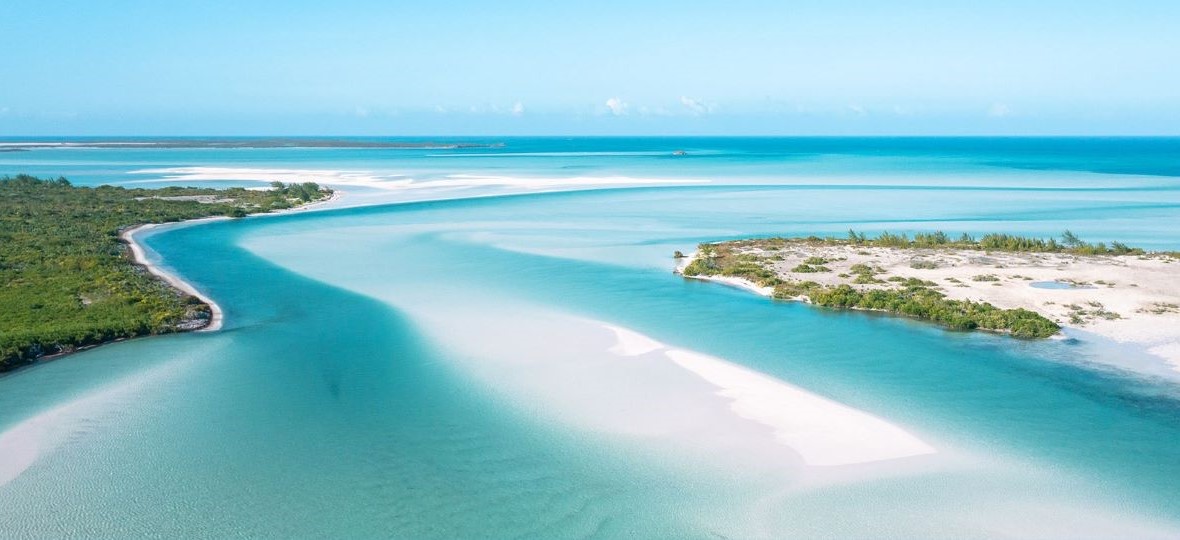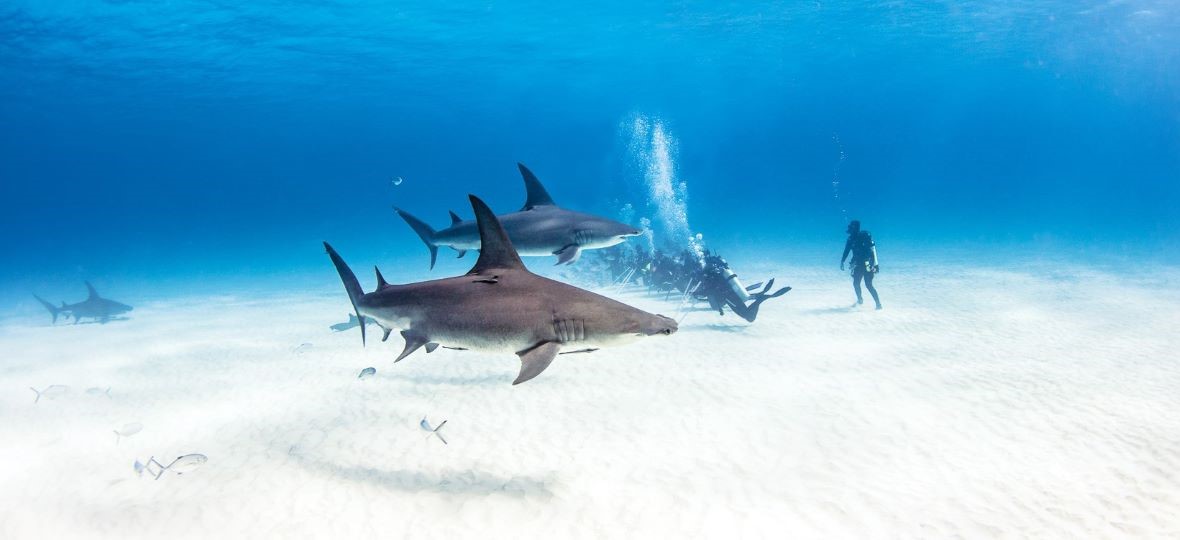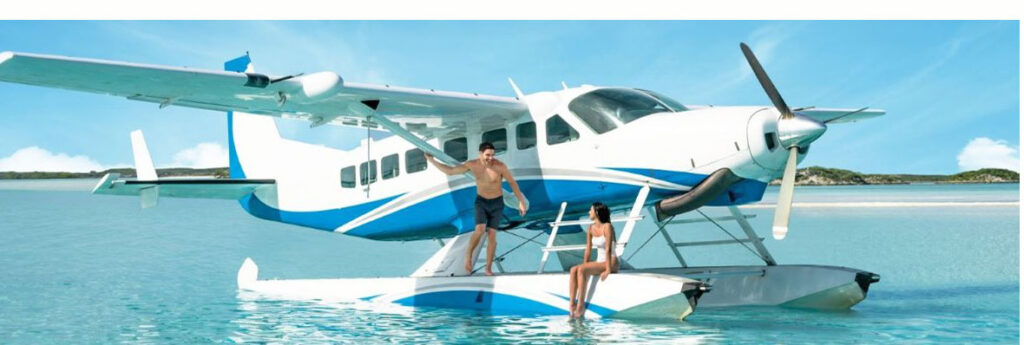The Bahamas is composed of more than 700 islets, islands, and 2,400 cays. Of those, less than 40 are inhabited. From the well-known, like Nassau-Paradise Island to hidden gems like Ragged Island, each island promises a distinctive window into Bahamian life and culture. So where to go? Here’s a list of 16 unique islands – all of them worthy, in their own special way:
Well-Known islands
Nassau & Paradise Island: One of the most notable islands of the Bahamas, visitors can experience an island metropolis teeming with history, art, nightlife, and culture. The popular island is home to world-class resorts with sprawling gardens, swimming pools, marinas, casinos, dining, and nightlife. For more authentic experiences, travellers can visit The Queen’s 66 Steps. Carved out of solid limestone in 1794, the Queen’s Staircase provided a direct path from Fort Fincastle to central Nassau. The Retreat Gardens, an 11-acre property, is another great location it houses one of the largest private collections of rare and exotic palms in the world – approximately 170 species. It’s one of four national parks on New Providence Island.
Grand Bahama: The second-largest island in The Bahamas, Grand Bahama is a tropical playground for visitors. Freeport is home to two national parks: Peterson Cay National Park and Rand Nature Center. Peterson Cay National Park, the smallest national park in The Bahamas, can only be accessed by boat and is a favorite for snorkelling and diving thanks to its four distinct reef zones teeming with manta rays, barracuda and other marine life. Rand Nature Center is Freeport’s most accessible national park and is a 100-acre sanctuary offering a 2,000-foot trail winding through coppice, pine forest and nearly 130 identified plants.
The Exumas: Renowned for their sapphire-blue waters, this chain of islands is home to isolated, untouched beaches, deserted cays, and ultra-exclusive resorts. Sometimes called Pig Beach, The Exumas’ Big Major Cay is home to the world-famous swimming pigs. The Exumas are also home to the Thunderball Grotto, an underwater cave just west of Staniel Cay where the entrance is hidden underwater, but curious travellers can swim through during low tide to discover an array of colorful tropical fish in the clear waters.
Water adventure

The Abacos: Known as the Boating Capital of the Bahamas, the Abacos a chain of islands and cays, spanning 120 miles is a boating, fishing, and sailing paradise. The island draws boaters of all kinds—from sailing purists to power boaters, novices to seasoned captains—and there are 17 marinas sprinkled throughout the island chain so visitors can island hop with ease. Enthusiasts eager to delve into the island’s rich boating history can experience the time-honored tradition of handcrafting boats at Man-O-War Cay. Serving as the hub of this age-old trade in The Abacos, the residents of this community have become celebrated for their exceptional workmanship, a skill passed down through generations.
The Berry Islands: A cluster of cays which totals no more than 12 sq. m. of landmass, the Berry Islands are bordered by the Tongue of the Ocean, a deep underwater trench that draws in all sorts of marine life, making these waters some of the most bountiful in The Bahamas. For experienced fishermen and women, a visit to Chub Cay, known as “The Billfish Capital of The Bahamas,” is a must as it holds record-breaking catches of blue and white marlin. Those seeking a more relaxing beach getaway can enjoy miles of secluded beaches including Shelling Beach, Sand Dollar Hill, Sugar Beach, and more.
Long Island: Home to brilliant coral reefs, pristine flats and serene beaches, Long Island is a haven for fishing, diving, and boating. Boasting world-class bonefishing and encounters with sea life, this tranquil island offers a few inland surprises, including Dean’s Blue Hole, the third deepest blue hole in the world, and St. Mary’s Roman Catholic Church, the oldest church in the country. The island is also historic in that its northern tip marks the shore where Christopher Columbus made his landfall on the island, now called Columbus Point. Today, visitors can find a towering monument and spectacular views atop the hill of Columbus Point. Conveniently enough, Makers Air has launched service between Fort Lauderdale Executive Airport and the Stella Maris resort on Long Island.
Ragged Island: Known as a haven for avid fishermen, Ragged Island has unparalleled flats ideal for bonefishing. It’s not uncommon to snag an abundance of grouper, snapper, barracuda, tuna, and kingfish during a one-day expedition on the water or meet a local boat builder while kicking around Duncan Town, which is the island’s one and only settlement with a population so small, members of three different religious denominations gather at the same church on Sundays to celebrate together.
History
Bimini: Bimini is comprised of two islands, North & South Bimini, and is known as Ernest Hemingway’s favorite seaside hideaway as it is home to pristine beaches as his two-year stint inspired his Pulitzer Prize-winning novel The Old Man and the Sea. The island was also loved by other literary giants including internationally recognized author and poet Ashley Saunders, who was born and raised on the island.
Cat Island: Perfect for diving, kiteboarding, and meandering along miles of rolling hills, Cat Island is home to nature trails, an eight-mile pink sand beach and unique historic offerings. Cat Island is home to Mt. Alvernia, known as the Highest Point in The Bahamas as it sits 206 feet above sea level. Mt. Alvernia is also home to The Hermitage, a medieval stone monastery built in 1939 that sits atop of the mountain. Cat Island was also home to Academy Award-winning actor, Sir Sidney Poitier, as he grew up on the island just outside of Arthur’s Town.
Rum Cay: Rum Cay is considered one of the best-kept secrets in The Bahamas as the island offers an inside look into Lucayan art history as it’s home to Hartford Cave as its walls are decorated with ancient petroglyphs of the Lucayan-Arawak people that once lived there, perhaps the largest display of such art in The Bahamas. Rum Cay also offers travellers vivid coral reefs, miles of white sand beaches, thrilling surf, and just offshore, an abundant marine life that attracts fishermen, divers, and snorkellers from all around.
San Salvador: One of the smallest inhabited islands in The Bahamas, San Salvador is unique in the archipelago as it has sparkling inland lakes, various historic monuments, miles of secluded beaches and roughly 50 dive sites keep visitors well entertained. Perhaps the most photographed placed on the on the island, a stone cross on San Salvador’s Long Bay marks the spot of Christopher Columbus’ first landfall. There’s also an underwater monument offshore that designates where La Pinta dropped anchor.
Outdoors & adventure

Andros: The largest island in The Bahamas, Andros remains virtually untouched as it holds countless adventures for lovers of the outdoors. Andros is home to world-class scuba diving, deep-sea and fly fishing, national forests, and blue holes, and much more. Among the island’s five parks, the West Side National Park protects 1.5 million acres of pristine Andros wilderness, and to the east, the North & South Marine Parks protect 8,500 acres of the Andros Barrier Reef, which is the world’s third largest barrier reef at 190 miles long!
Inagua: Pristine and largely uninhabited, Inagua is the southernmost island in The Bahamas and a wonderland for bird watchers and ecotourists. The island is a unique ecological destination as it helped the once endangered species of West Indian Flamingos grow into an impressive population of 80,000. The island is also home to the Union Creek Reserve which covers nearly 5,000 acres of Great Inagua’s northwest shore and is a perfect natural environment for the endangered Green and Hawksbill Turtles. Inagua is also home to several animal species that were discovered and remain unique to Inagua Island including the fast-moving, freshwater turtle, various breeds of duck, a hummingbird, and a new type of lizard.
Under the radar
Acklins & Crooked Island: Acklins & Crooked Island remain almost as natural today as they were hundreds of years ago. Separated by a 500-square-mile lagoon known as the Bight of Acklins, both islands are a haven for boating, bonefishing, snorkeling, and diving. This small atoll includes the islands of Acklins, Crooked Island and Long Cay.
Eleuthera & Harbour Island: Located 60 miles east of Nassau, Eleuthera and Harbour Islands are quaint, seaside towns with storied New England-style architecture, conveniently surrounded by clusters of cays and sandbars. The islands are also home to pink sand beaches which cover the majority of Harbour Island but also cover more than 35 miles of mainland Eleuthera. For experienced surfers, the North End of Eleuthera offers a two-mile stretch of white sand beach with powerful, sometimes shoulder-high waves. The local surfers are friendly, more than willing to show visitors the ropes. For those looking for a calmer picturesque visit, South Eleuthera is home to a bottomless inland blue hole that locals believe has healing powers.
Mayaguana: More isolated and less developed than any other island in The Bahamas, Mayaguana is the ideal getaway for travellers seeking a secluded escape. Whether it’s a footprint-free beach or a far-off fishing spot, the island is the perfect blend of solitude and charm. Visitors of the island can enjoy hunt for crabs at Horse Pond Beach as it’s known to locals as an excellent spot for looking for crabs hiding in crevices of limestone rocks.

